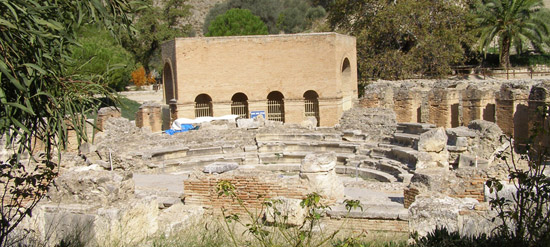Crete, the largest of the Greek islands, is a land steeped in history and culture. Known for its significant contributions to ancient civilization, Crete is home to a wealth of archaeological treasures, including a number of ancient theaters. These theaters are not only architectural marvels but also provide a window into the island’s vibrant cultural and social life in antiquity. Discovering the ancient theaters of Crete offers a fascinating journey through time, revealing the island’s rich heritage and its enduring legacy in the performing arts.
The Role of Theaters in Ancient Crete
In ancient Crete, as in much of the Greek world, theaters were central to community life. These structures were more than just venues for entertainment; they were integral to social, political, and religious events. Theaters hosted a variety of performances, including dramatic plays, musical contests, and public assemblies. They served as a communal space where citizens gathered to experience the arts, debate civic issues, and participate in religious festivals.
The Theater at Gortyna
One of the most significant ancient theaters in Crete is located in Gortyna, an ancient city that flourished during the Roman period. The Gortyna Theater, dating back to the 1st century BC, is a testament to the architectural prowess of the time. Built into a natural hillside, the theater could accommodate thousands of spectators, providing them with excellent acoustics and unobstructed views of the stage.
The Gortyna Theater’s layout reflects the typical Greek theater design, with a semicircular orchestra, a skene (stage building), and tiered seating arranged in a fan shape. Excavations at the site have revealed intricate carvings and inscriptions, offering insights into the types of performances held there and the cultural significance of the theater in ancient Gortyna.
The Theater of Aptera
Another notable theater is found in the ancient city of Aptera, located near modern-day Chania. Aptera was a powerful city-state during the Hellenistic and Roman periods, and its theater is one of the best-preserved on the island. The Aptera Theater, constructed in the 3rd century BC, showcases the advanced engineering skills of the ancient Cretans.
The theater is built from local limestone and features a large, circular orchestra and well-preserved seating tiers. The design of the Aptera Theater is notable for its symmetry and attention to detail, indicative of the importance placed on aesthetics and functionality. Today, visitors can explore the site and imagine the vibrant performances that once captivated the audience in this ancient venue.
Theater at Lyttos
The ancient city of Lyttos, located in central Crete, also boasts a significant theater. Lyttos was a major center during the Hellenistic period and continued to thrive under Roman rule. The theater at Lyttos, though not as large as those at Gortyna or Aptera, played a crucial role in the cultural life of the city.
Constructed in the 2nd century BC, the Lyttos Theater features a typical Hellenistic design with a horseshoe-shaped orchestra and tiered seating. The theater was strategically positioned to offer stunning views of the surrounding landscape, enhancing the overall experience for the spectators. Excavations at Lyttos have uncovered numerous artifacts, shedding light on the types of performances and events that were held in this ancient venue.
Cultural Significance and Preservation
The ancient theaters of Crete are invaluable cultural assets that provide a glimpse into the island’s rich history. They stand as monuments to the artistic and architectural achievements of ancient Cretan society and highlight the importance of theater in communal life. Preserving these ancient structures is crucial for maintaining a connection to the past and for understanding the development of the performing arts in the Mediterranean region.
Efforts to preserve and restore these theaters are ongoing, with archaeologists and historians working to protect these sites from the ravages of time and environmental factors. Conservation projects aim to stabilize the structures, restore damaged areas, and provide informative signage to educate visitors about the historical and cultural context of the theaters.
Visiting Cretan Theaters Today
For modern visitors, exploring the ancient theaters of Crete is a captivating experience. Walking through these historic sites, one can almost hear the echoes of ancient performances and feel the communal spirit that once filled these spaces. Many of the theaters are located in scenic areas, offering breathtaking views that enhance the sense of stepping back in time.
Tourists can combine their visit to the theaters with trips to nearby archaeological sites, museums, and traditional Cretan villages, creating a rich and immersive cultural itinerary. Whether one is a history enthusiast, an architecture aficionado, or simply a curious traveler, the ancient theaters of Crete provide a profound connection to the island’s storied past and its enduring legacy in the arts.
Conclusion
Discovering the ancient theaters of Crete is a journey into the heart of the island’s cultural heritage. These remarkable structures, with their timeless beauty and historical significance, offer a unique perspective on the social and artistic life of ancient Cretan society. By exploring these theaters, visitors can gain a deeper appreciation for the island’s rich history and the enduring influence of its ancient civilization.


